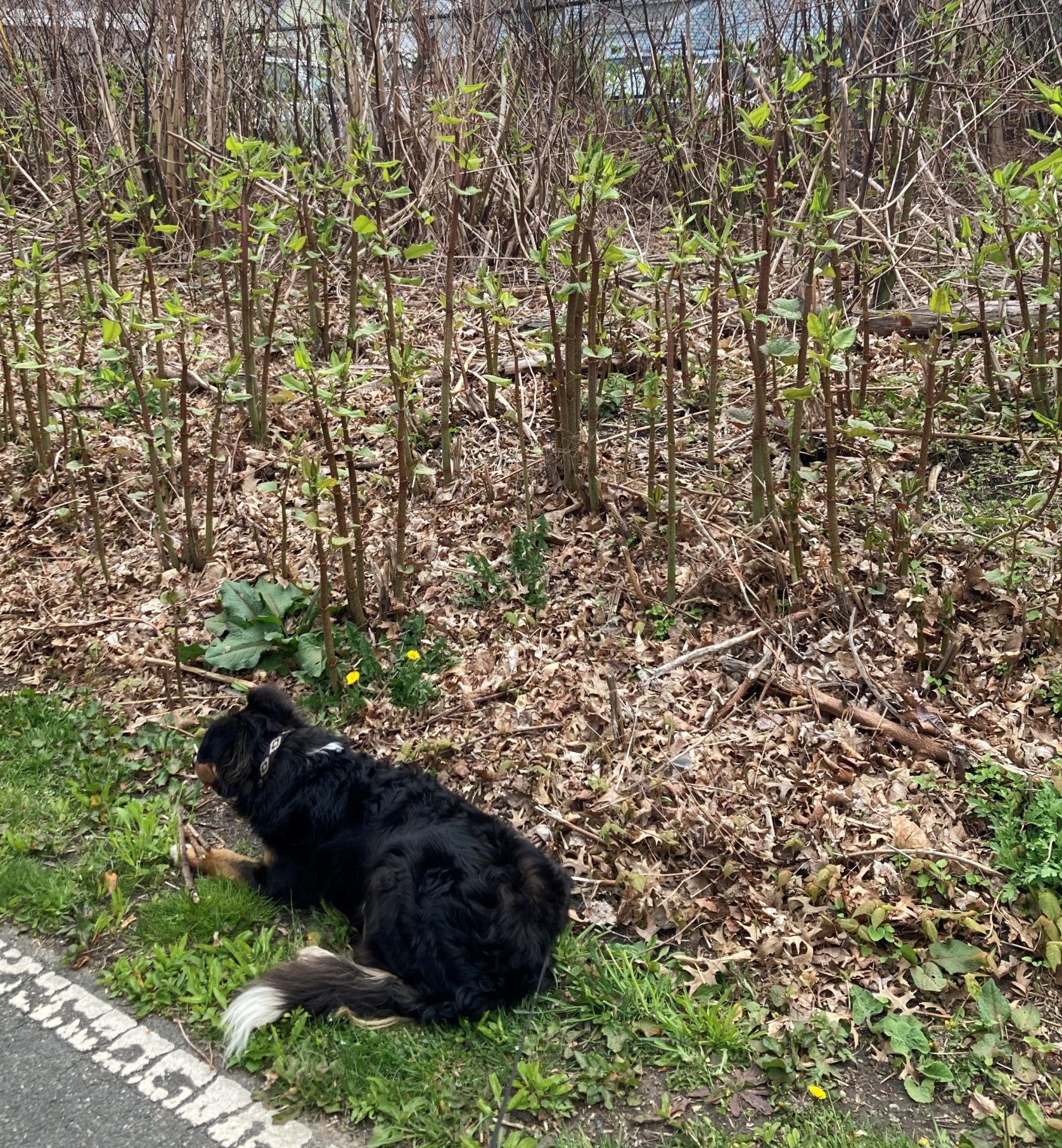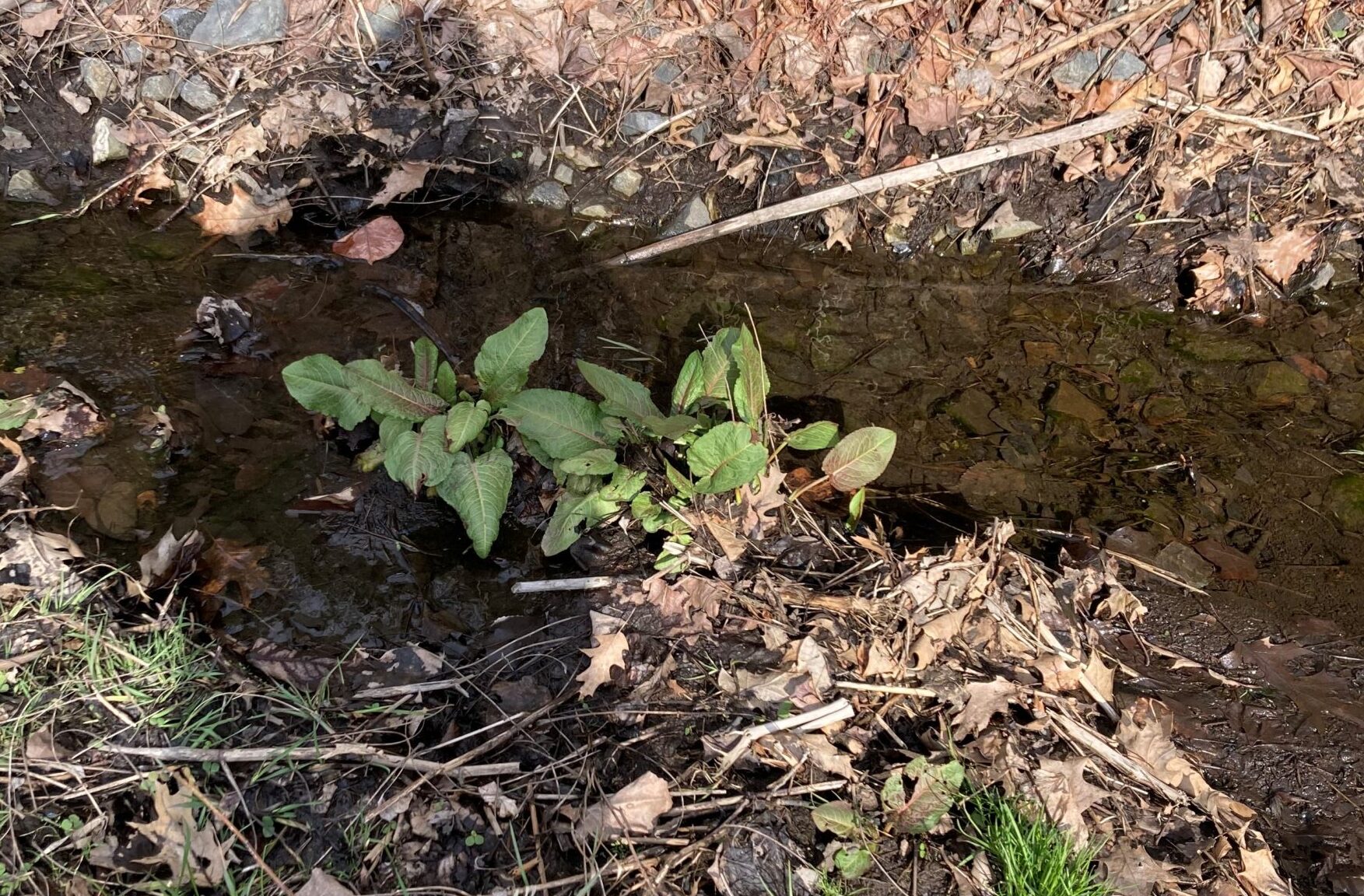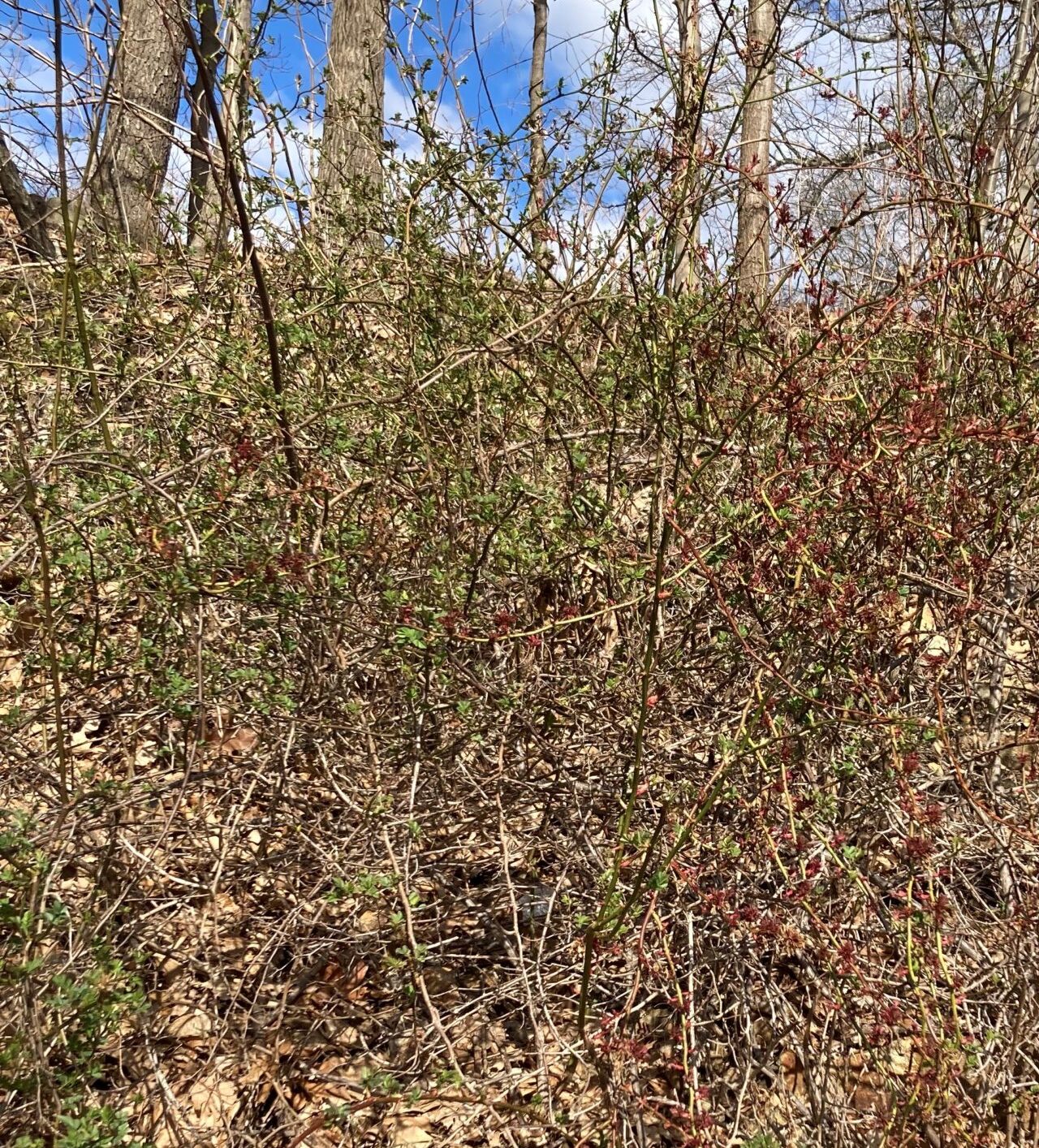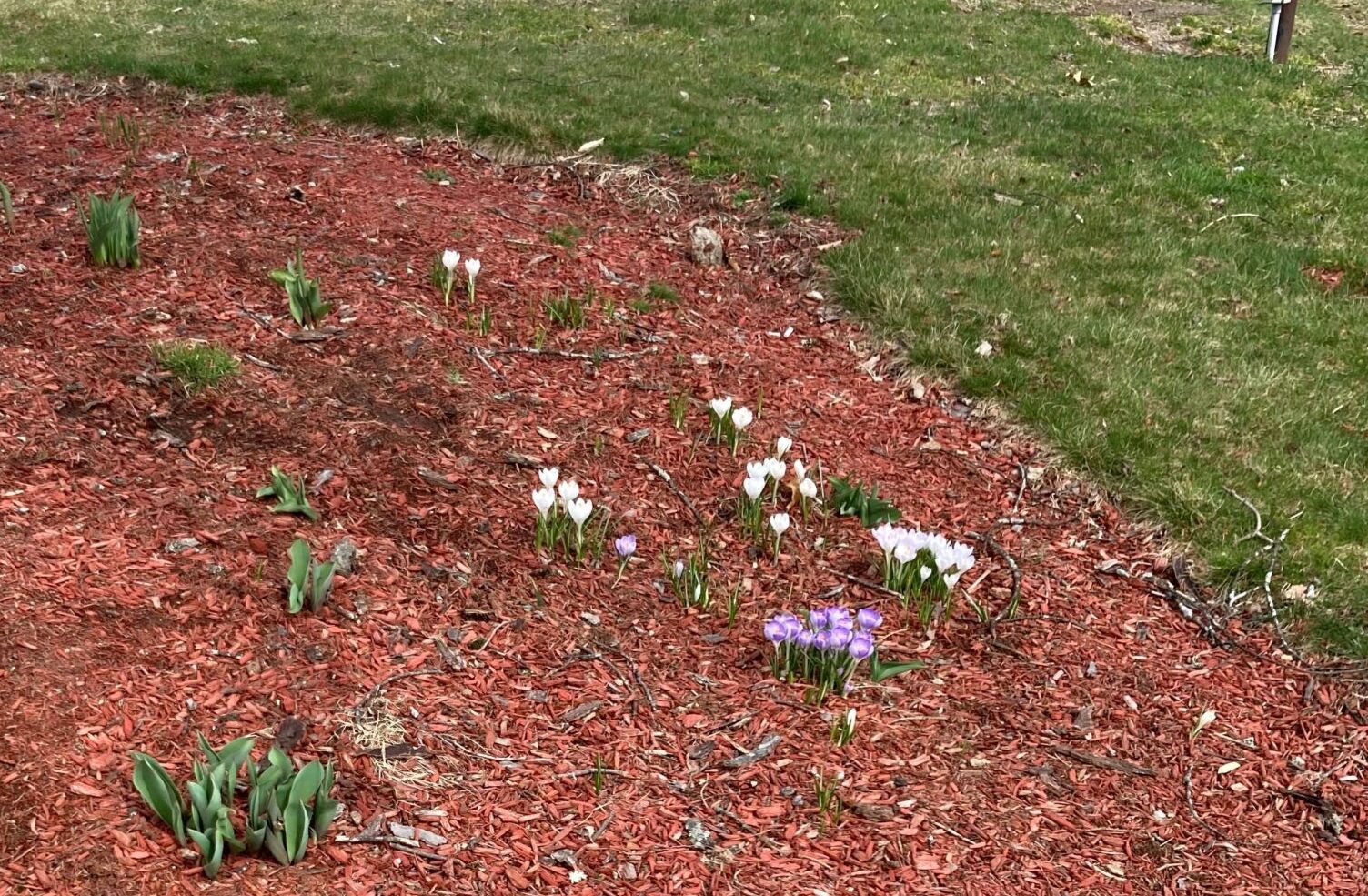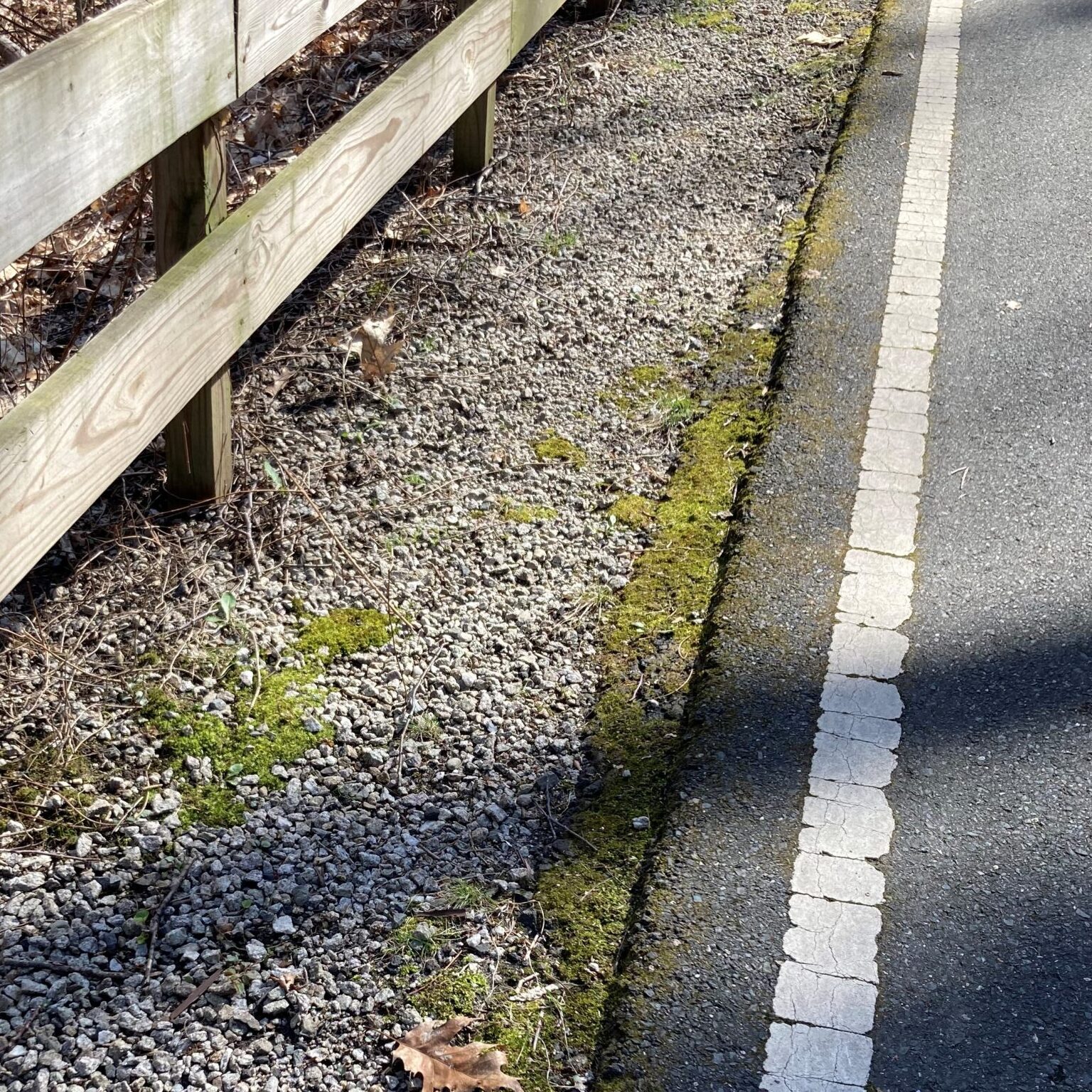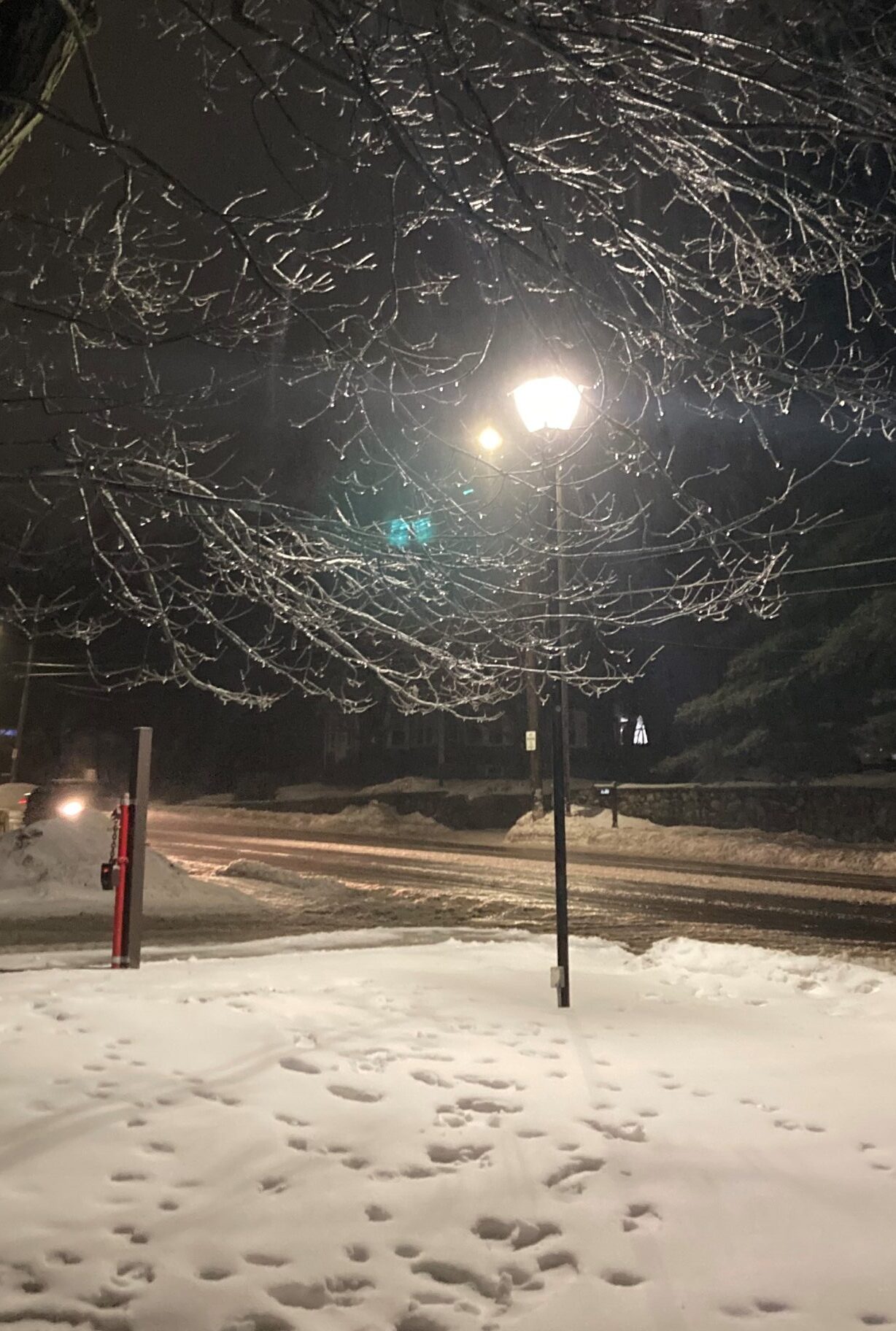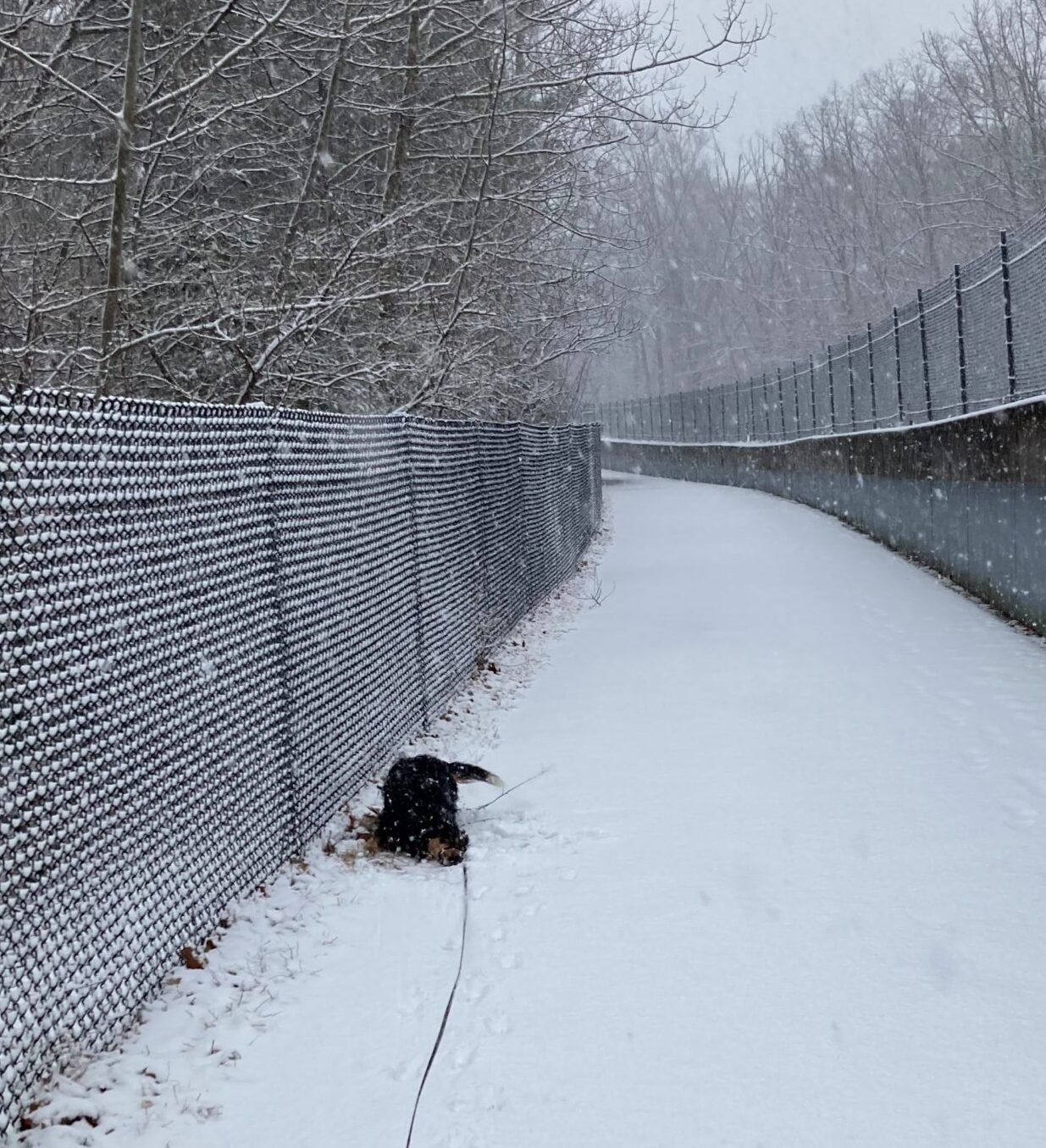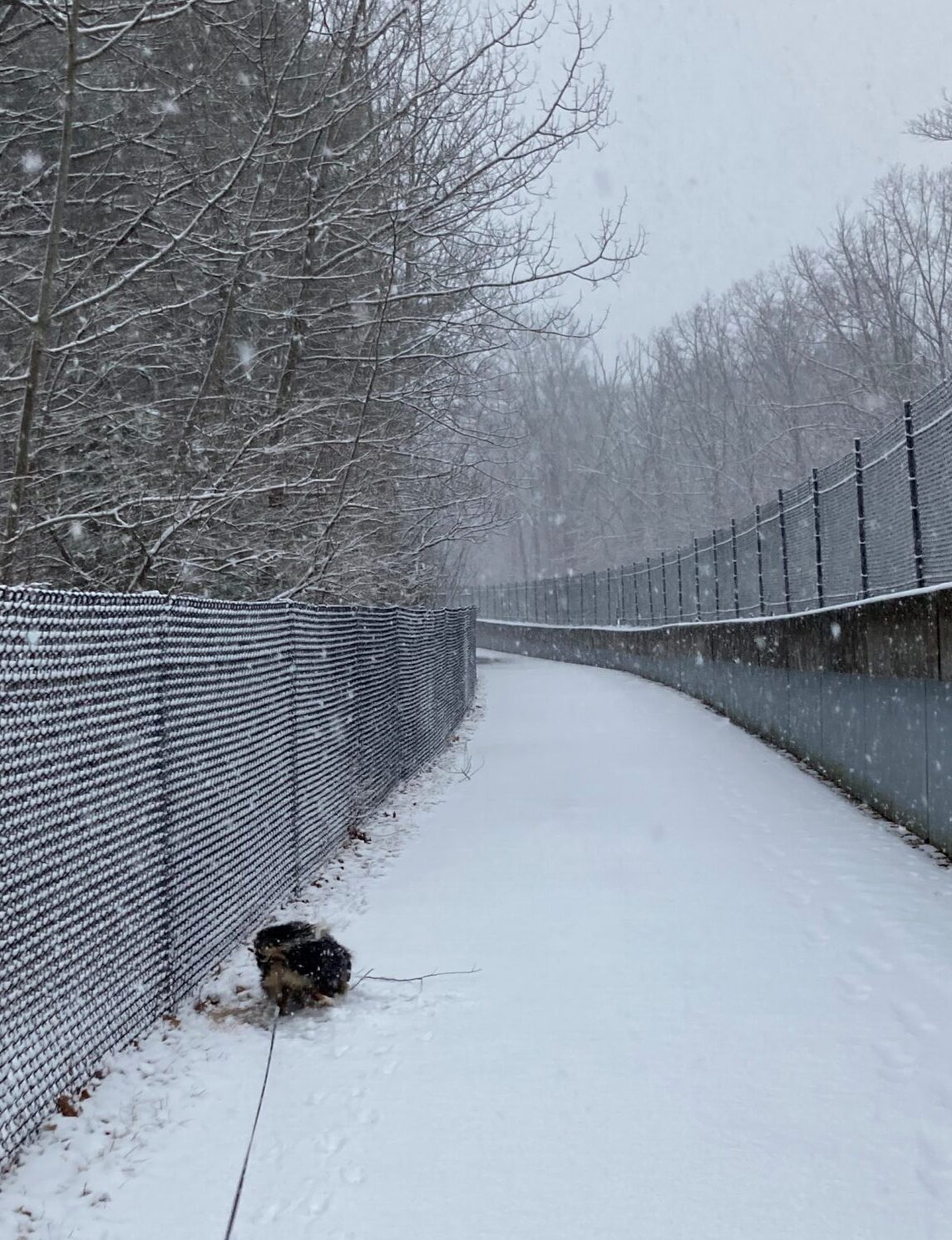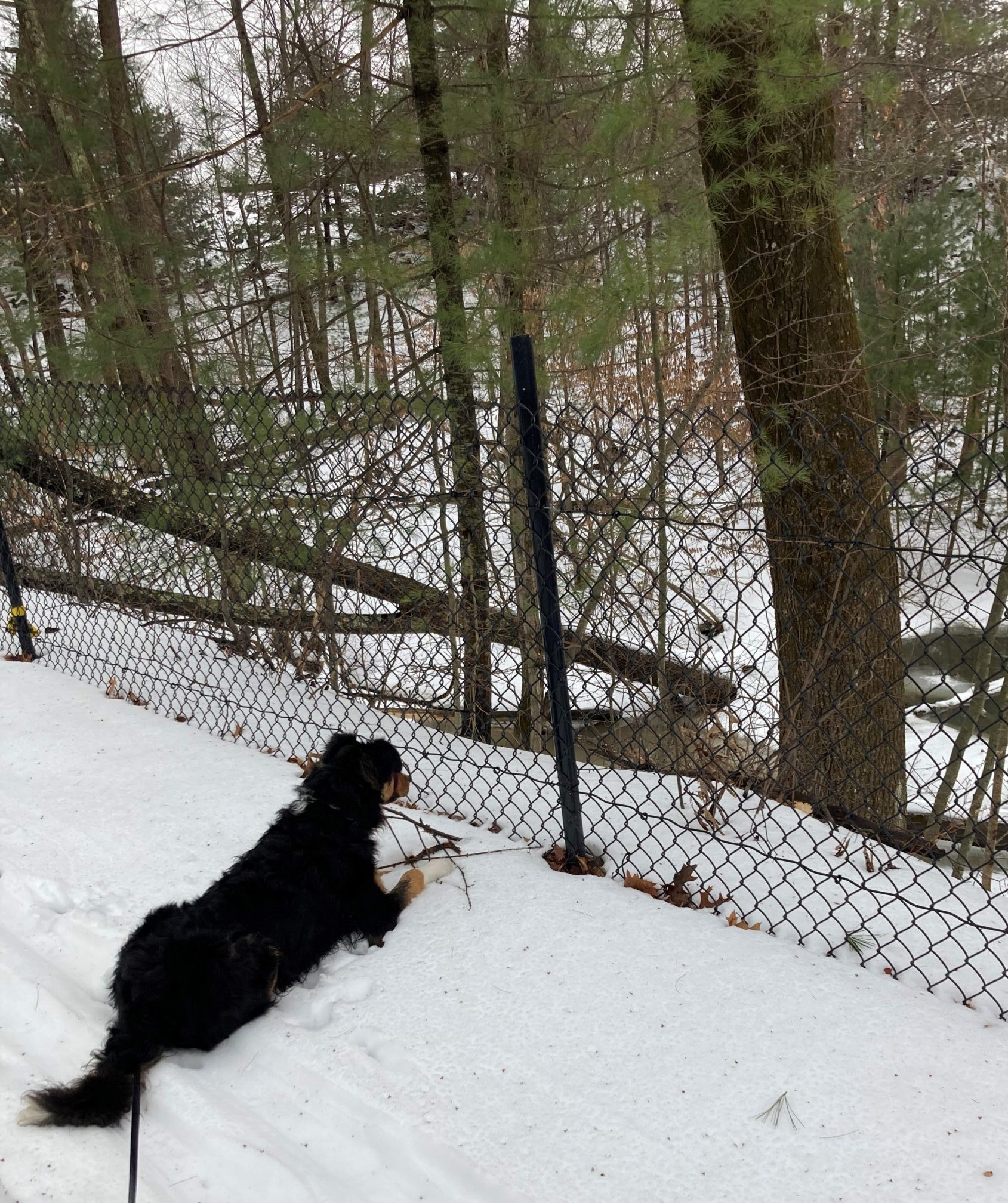The man is rich whose pleasures are the cheapest.
-Henry David Thoreau
Today, it is pushing seventy and partly sunny (that’s a glass half full description if there ever was one) with only a light breeze. I am in my shirt-sleeves and working up a sweat. Waldo’s tongue protrudes from his snout, flat as a crepe and flopping about as he bounces down the trail. It’s midweek, midafternoon, and still, there are quite a number of bikers, skaters, skateboarders, dog walkers and just plain folks ambling down the tarmac. It’s the warmest it’s been for many months and there are quite a few people who are taking advantage. Birds are singing, squirrels are cavorting and insects are buzzing. The bugs must have been hibernating because as soon as it gets warm enough, they are out in numbers. Including ticks. But not mosquitoes – yet.
Water, left from a recent rain, flows down the creeks and channels alongside the trail. There’s some mud around, but not much, as the sun dries up most of what is there. Waldo always finds a wet spot to roll his head in. “Hey,” I complain to him, “I gotta pet that thing!” It does no good. Whatever urges him to wriggle in the mud is stronger than my admonishment. His white spots turn dark brown and his face and furry pate are streaked with stuff that’s curdled and slimy – the consistency of chunky peanut butter. Ugh. He rights himself and continues on down the trail in a gleeful trot, having satisfied an itch in a hard-to-reach place. He is a master at enjoying simple pleasures.
Pleasure is an odd experience. It’s not only subjective – I don’t think I’d be as joyful rolling in the mud as Waldo — it’s also relative. I remember a time years ago when I was a teenager and I had malaria. I picked it up while my family and I were in Ethiopia. The strain I had could lie dormant in the liver for years before becoming active. We had been back in the US three or four years when, one day, I developed shaking chills. My fever shot up to about 104.5 and I felt miserable. I had little energy to do much more than lie on my back and roll my eyes at the ceiling. This lasted for a few hours and then, suddenly, my temperature dropped a half of a degree. It felt like every muscle in my body spontaneously relaxed with a resounding “Aaaaaah.” I broke out in beads of sweat the size of marbles that soaked my sheets. My fever had broken and it happened precipitously. I learned then that there are few, if any, pleasures so great as the sudden cessation of pain.
I remember another time I was frying some chicken in olive oil. Idiotically, I reached out and grabbed a piece of chicken with my hand to turn it over. At that moment, a dollop of hot oil leapt up and splashed on my exposed fingers. Damn, that hurt! I was quite aware that burns are treated by putting cold compresses on them, but I’d never had a burn that needed it. Until that moment. I put my fingers in some cold water, expecting the pain to ease a bit. I was shocked to discover that it made the pain completely go away! I pulled my fingers out of the water — excruciating pain. Back in the water – “Aaaaaah!”, pain free. It was amazing. If only all medical problems could be so completely treated.
Were these simple pleasures? Well, they sure weren’t complicated ones. There are so many things in our everyday life that can give pleasure – the aroma of a flower, the sight of sunlight reflecting off a placid lake, the sound of birdsong, the feeling of a cool breeze gently caressing sweaty skin, just to name a few. They are all around us and omnipresent. And we don’t have to experience pain to enjoy them. All we have to do is open our awareness to appreciate them.
I look at Waldo jauntily trotting down the tarmac. Maybe I should try a little roll in the mud?
Nah, not today.


